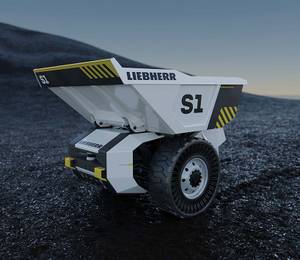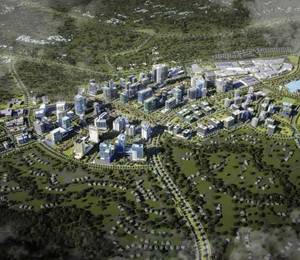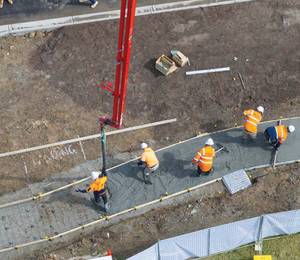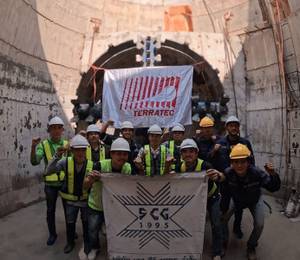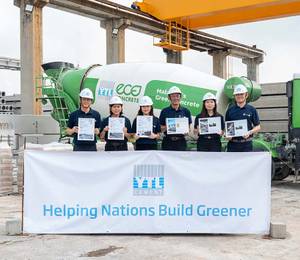The AI tower crane system, developed by the InnoHK Hong Kong Centre for Construction Robotics (HKCRC), has been implemented for the first time in the redevelopment of Block 13 of Hong Kong’s Pak Tin Estate. This technology brings transformative improvements in both site safety and construction efficiency.
As a key component of the strategic collaboration between HKCRC and the Hong Kong Housing Bureau, the development and application of the AI tower crane system aim to address labour shortages in the construction industry, enhance site safety and meet future massive public housing demands.
Traditional crane operation requires workers to work long hours at high altitudes, facing risks from elevated work and extreme weather conditions. HKCRC’s AI tower crane system, through a remote intelligent control cabin, allows operators to direct lifting operations from the ground, completely avoiding the safety hazards associated with high-altitude work.
One operator said, “The new system allows us to work in a comfortable environment, completely solving basic needs like restroom breaks and meals.” In addition, the system addresses long-standing occupational health issues for tower crane operators:
-
Reduced physical strain: Eliminates the fatigue from frequent climbing and prolonged stationary postures in traditional crane operation, lowering the risk of back injuries and musculoskeletal disorders.
-
Avoidance of environmental hazards: Operators are no longer exposed to high temperatures, strong winds, or heavy rain, effectively preventing heatstroke and accidental injuries.
The system’s AI safety monitoring function can automatically identify personnel within a 3-m radius of the hook, providing immediate warnings of potential risks and significantly reducing site accident rates. The current AI system is compatible with tower cranes of different brands and suitable for various site environments, achieving a 98% accuracy rate in AI monitoring and recognition.
Integrating laser and satellite positioning technologies, the system supports ‘point-to-point’ automatic path planning, capable of stabilising hook swing within 10 seconds, with precision equivalent to that of an operator with 30 years of experience. Actual measured data show that the AI tower crane can perform up to 130 lifts per day, approximately 30% more than traditional cranes, significantly shortening the public housing construction timeline.
The AI tower crane system was jointly developed by HKCRC and the Hong Kong Housing Authority, representing an innovative application case in Hong Kong’s public housing projects. Dr Liang Haobo, associate director of HKCRC, explained, “Considering the long-term development of the AI tower crane system, we designed this system to be highly versatile.
“It is applicable to different brands and models of tower cranes without requiring redevelopment for different crane models. We plan to collaborate with crane manufacturers, hoping to make this system a standard factory feature, promoting the local application of Hong Kong’s R&D outcomes and moving towards internationalisation, further enhancing Hong Kong’s international position in the field of intelligent construction.”
Romeo Yiu, head of innovation and technology at the Housing Department, said, “The AI tower crane system not only enhances construction safety, but also provides technical support for accelerating public housing supply through its efficient lifting capabilities.” The technology will be promoted to the Tung Chung Area 42 public housing project in the future and gradually incorporated into new engineering contracts.


